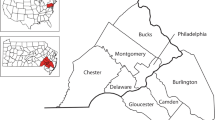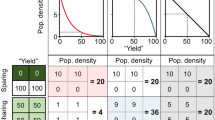
Overview
- First, we believe that environmental conservation is promoted best by opening the door to science, especially to those most directly involved with land development decisions: planners, city and county planning commissions and boards, local elected officials, land trusts, environmental groups and the public-at-large. We include the public in this group because they are directly affected by exurban land development and play a critical role in land-use decisions by voicing concerns at public hearings and meetings
- Second, we seek to broaden the involvement of environmental scientists in land-use planning. That is, environmental scientists can, and should, comment on land-use decisions at the outset instead of providing expert testimony later in the process, or evaluating the impacts of exurbanization after the fact. There is a growing movement among environmental scientists for more active participation in the land policy arena: the book provides such a venue
- Includes supplementary material: sn.pub/extras
Access this book
Tax calculation will be finalised at checkout
Other ways to access
About this book
Much of the country’s recent population growth is situated in exurban areas. By many accounts exurbanization has become the dominant pattern of land development in the country and there is no indication it will slow in the foreseeable future (Theobald 2005; Brown et al. 2005; Glennon and Kretser 2005). By definition, exurban development takes place beyond the metropolitan fringe, often in rural and remote areas. The development of new exurban communities is a growing trend, especially in the West. In this case, developers and homebuilders seek large tracts of land, up to thousands of acres, in rural areas (typically within 50 miles of a large city) where they plan entire communities consisting of commercial, retail and residential land uses. Recreational amenities such as golf courses and hiking/biking trails are often included in these master-planned developments.
Our philosophy is reflected in the book’s two objectives. First, we seek to document the extent and impacts of exurban development across the country. At issue is demonstrating why planners and the public-at-large should be concerned about exurbanization. We will demonstrate that even though exurbanization favors amenity rich regions, it affects all areas of the country through the loss of agricultural and grazing lands, impacts to watersheds and land modification. A summary of environmental impacts is presented, including the loss of wildlands and agricultural productivity, land modification, soil erosion, impacts to terrestrial hydrologic systems, the loss of biodiversity, nonnative and endangered species and other topics.
Our second aim is to provide readers from diverse (nonscientific) backgrounds with a working knowledge of how and why exurbanization impacts environmental systems. This is accomplished by working closely to ensure contributors follow a specific outline for each chapter. First, contributors will spell out fundamental concepts, principles and processes that applyto their area of expertise (e.g., riparian areas). Contributors will move beyond a cursory understanding of ecological processes without overwhelming readers with the dense material found typically in specialized texts. For this reason, visuals and other support materials will be integral to each chapter. We have chosen contributors carefully based on their record as research scientists and acumen as educators. Second, once the mechanics have been laid out, authors will explain how and why land development in nearby areas influences ecosystems. Issues of interdependency, modification and adaptation, spatial scale and varying time horizons will be featured. Third, contributors will weigh in on the pros and cons of various land-development schemes. Fourth, authors will share their thinking on the merits of conservation devices such as wildlife corridors, open-space requirements and watershed management districts. Finally, each chapter will conclude by identifying pitfalls to avoid and highlighting "best practices" that will mitigate environmental problems or avoid them altogether. In sum, after completing each chapter, readers should have a firm grasp of relevant concepts and processes, an understanding of current research and know how to apply science to land-use decisions.
Similar content being viewed by others
Keywords
Table of contents (13 chapters)
-
Front Matter
-
History and Fundamental Ecological Concepts
-
Front Matter
-
-
SECTION 1: HISTORY AND FUNDAMENTAL ECOLOGICAL CONCEPTS
-
Exurban Land Development, Habitat, and Wildlife
-
Front Matter
-
-
SECTION 2: EXURBAN LAND DEVELOPMENT, HABITAT AND WILDLIFE
-
Water Resources, Wetlands, and Storm Water Management
-
Front Matter
-
-
SECTION 3: WATER RESOURCES, WETLANDS AND STORM WATER MANAGEMENT
-
Science-Based Planning in Exurban Areas
-
Front Matter
-
-
SECTION 4: SCIENCE-BASED PLANNING IN EXURBAN AREAS
-
Back Matter
Reviews
Editors and Affiliations
About the editors
Adrian X. Esparza is Associate Professor in the School of Natural Resources at the University of Arizona (Ph.D. 1987, University of Illinois-Urbana). He taught previously in the School of Planning, College of Architecture at the University of Arizona. His research focuses on exurban land development in the southwest United States and urbanization in the United States-Mexico border region. He has published dozens of articles in the fields of urban and regional planning and regional science.
Guy McPherson is a Professor in the School of Natural Resources at the University of Arizona (Ph.D. 1987, Texas Tech University). He also worked for the University of Georgia, Texas A & M University, University of California-Berkeley, and The Nature Conservancy. His research focuses on development and application of ecological knowledge. His scholarly efforts have produced dozens of journal articles and eight books.
Bibliographic Information
Book Title: The Planner’s Guide to Natural Resource Conservation:
Book Subtitle: The Science of Land Development Beyond the Metropolitan Fringe
Editors: Adrian X. Esparza, Guy McPherson
DOI: https://doi.org/10.1007/978-0-387-98167-3
Publisher: Springer New York, NY
eBook Packages: Earth and Environmental Science, Earth and Environmental Science (R0)
Copyright Information: Springer-Verlag New York 2009
Hardcover ISBN: 978-0-387-98166-6Published: 06 July 2009
Softcover ISBN: 978-1-4899-8435-7Published: 26 November 2014
eBook ISBN: 978-0-387-98167-3Published: 12 June 2009
Edition Number: 1
Number of Pages: XXII, 258
Topics: Nature Conservation, Landscape Ecology, Community & Population Ecology, Conservation Biology/Ecology, Urban Ecology, Sustainable Development



